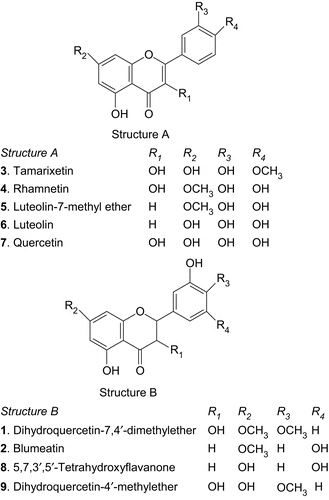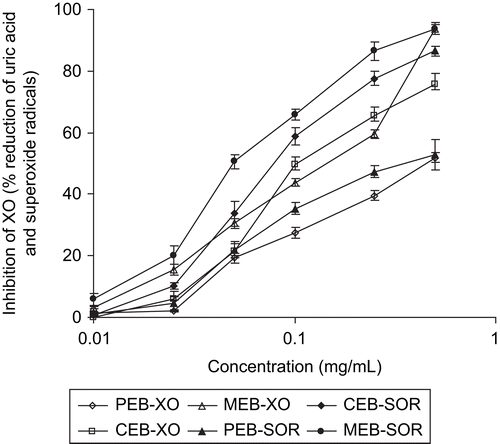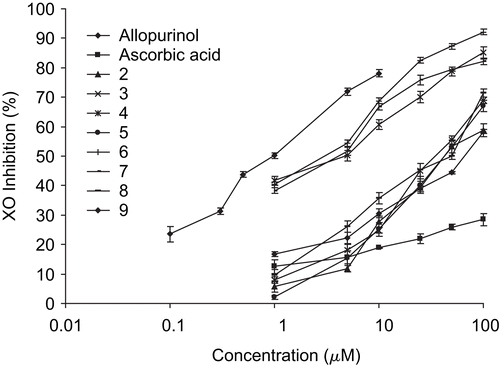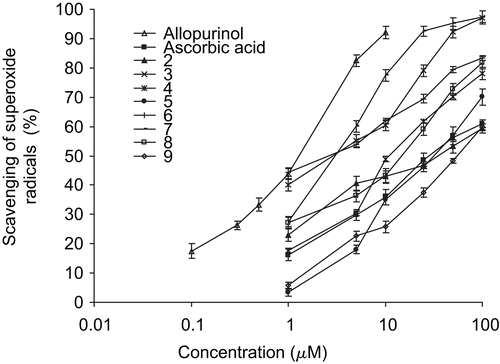Figures & data
Figure 1. Structure of flavonoids isolated from the leaves of Blumea balsamifera studied for their xanthine oxidase inhibitory activities and scavenging capacity on enzymatically (xanthine/xanthine oxidase system) generated superoxide radicals.

Table 1. The IC50 values of extracts of the leaves of Blumea balsamifera for inhibition of xanthine oxidase and reduction of superoxide level.
Figure 2. The concentration of different solvent extracts of Blumea balsamifera leaves versus the inhibition of xanthine oxidase and scavenging of enzymatically generated superoxide radicals. Results are mean ± SD (n = 3).

Table 2. The IC50 values of flavonoids of the leaves of Blumea balsamifera for inhibition of xanthine oxidase.
Figure 3. The concentration of flavonoids (2–9) and reference compounds (allopurinol and ascorbic acid) versus inhibition of xanthine oxidase, the enzyme that produces uric acid and superoxide radicals. Results are mean ± SD (n = 3).

Table 3. The IC50 values of flavonoids of the leaves of Blumea balsamifera for reduction of enzymatically (xanthine/xanthine oxidase) generated superoxide radicals.
